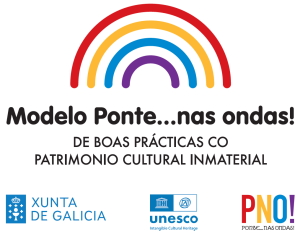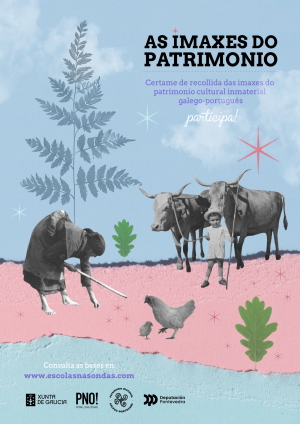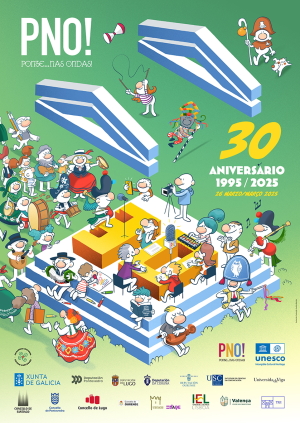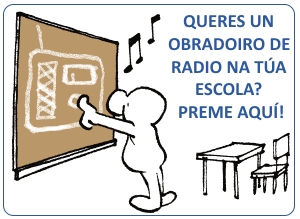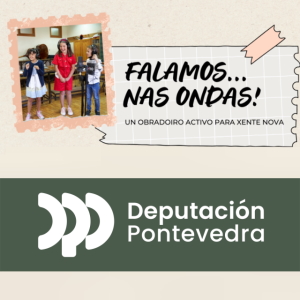- The Cultural and Pedagogical Association of Galicia and Northern Portugal inaugurated an exhibition this Thursday in the cloister of Fonseca (Santiago) in collaboration with the University of Santiago de Compostela, the Council of Galician Culture and the City Council of Santiago de Compostela, with images of the 25 assets that Spain has recognized in UNESCO
- The exhibition “Images of Heritage” also opened its doors at the Faculty of Education of Ourense and in Valença.

This October 17th, the International Day for Intangible Heritage was celebrated for the first time at the proposal of UNESCO. The Cultural and Pedagogical Association Ponte…nas ondas! has decided to use this date to claim the cultural wealth and diversity of the State with a photographic exhibition with the 25 intangible heritage assets recognized by the United Nations Organization for Culture, Science and Education. An exhibition in which the Association itself appears, accredited since 2015 and chosen as a model of good practices with Intangible Cultural Heritage in Spain and Portugal in 2022.
The president of the Association, Santiago Veloso, claimed the importance of Intangible Cultural Heritage (ICH) as a “living and increasingly important heritage in the lives of people and communities”. In this sense, he highlighted the work PNO! have been doing since 1995 to “value, and at the same time relay to the youngest and to society in general, the existence of a common cultural heritage for Galicia and Portugal that has remained active and alive beyond the borders until today”. The Ponte… nas Ondas! Association, which will commemorate its 30th anniversary next year, has been working from the classrooms to disseminate the common Galician-Portuguese culture to the new generations, using new technologies and, particularly, radio as a support, trying to build a radio bridge between Galicia and Portugal.
“We propose the ICH as part of the educational practices in the centers”
The Cultural and Pedagogical Association invites educational centers to join in commemorating this date and to convey to students the value of intangible culture. As an example, a traditional music group made up of students from the CEIP of A Ramallosa (Teo) participated in the inauguration of the exhibition in the Lower Cloister of the Pazo de Fonseca.
Precisely, in the image of the exhibition that represents Ponte… nas Ondas!, those same girls and boys appear, in a previous performance in another radio activity promoted by PNO!: “they are already people who carry our heritage and one day they will feel proud to transmit their knowledge and their practices to their descendants,” explained Veloso.
Autumn of Heritage
The photographic exhibition made up of 25 panels with the assets recognized by UNESCO as Intangible Cultural Heritage will remain in the cloister below the Pazo de Fonseca of the University of Santiago for a month, until November 16, which will commemorate another significant day: the International Day of Tangible Heritage. Thus, the Cultural and Pedagogical Association invites to celebrate the ‘Autumn of Heritage’ by completing the exhibition schedule with activities in the socio-cultural centers of the City Council of Santiago de Compostela and the Galician Culture Council.
Activities in which they will seek to claim the Galician-Portuguese intangible cultural heritage and pay tribute to some of its bearers. In this sense, the president of the Galician Culture Council, Rosario Álvarez, focused on the fact that this intangible heritage is the result of the interaction between the territory and society, so that each community “has something of its own that no one else has”. She also highlighted the integrative nature of Galician identity, “always respectful of other entities”: “these celebrations want to emphasize respect for diversity, the identity of others, and make known the ways of being, and being in the world.”
The councilor for Sociocultural Centers, Xan Duro, also claimed the need to “preserve and protect” culture and intangible heritage. He said “maintaining the memory of what we were and what we are” manifested through celebrations, crafts or traditional commerce, for example: “it is our identity.”
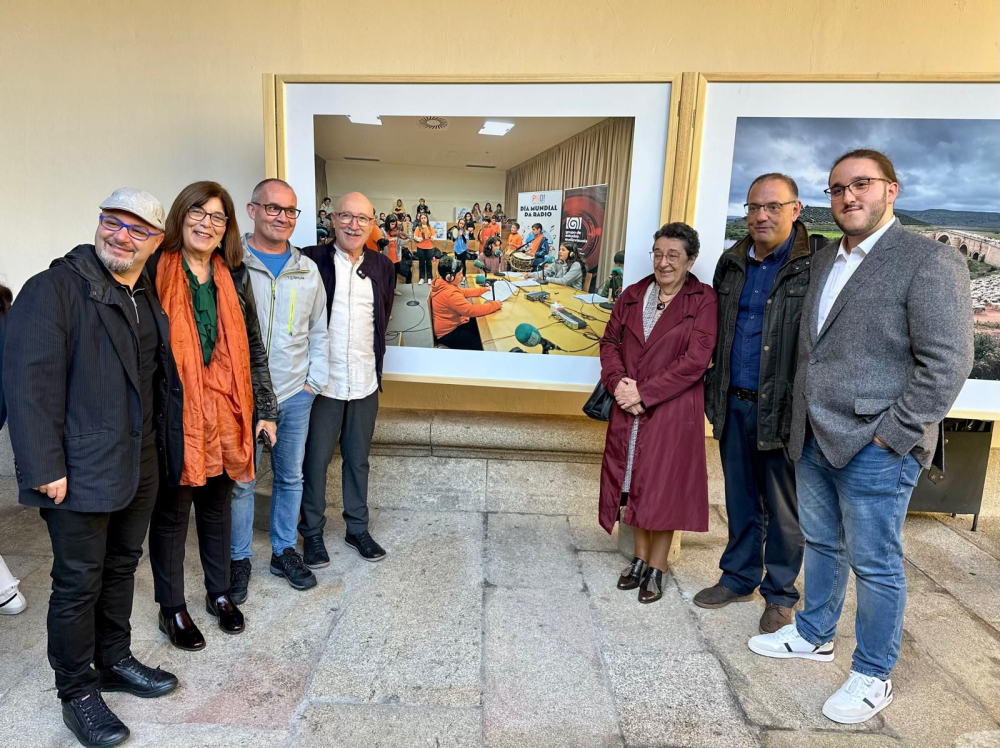
An exhibition as a “space for cultural exchange and knowledge”
The exhibition on the intangible heritage of the State, which was inaugurated this Thursday, will remain in Fonseca for a month. Regarding this, the vice-chancellor of the USC, Gumersindo Feijóo, claimed the cloister as the “most unique space in the University” and highlighted the synergies that can be produced between the assets reflected in the images of the exhibition and the building itself.
Also from Ponte… nas Ondas!, Xosé Manuel Diego, described the exhibition as a “dialogue”, encouraging anyone who visits the exhibition to do so by understanding it as a “space for exchanging knowledge and wisdom that each person has about some of the manifestations” that are collected in the 25 images: “In the few hours that the exhibition has been open to the public, you can see people, families or students who see the exhibition in groups and exchange impressions and aspects that they know about some of the manifestations that are collected here, generating a dialogue with the images themselves”, he explained.
The images, in addition to capturing the Ponte… nas Ondas! model, also capture other manifestations such as the Caballos del Vino festival in Caravaca de la Cruz (Murcia), the celebration of the Patum in Berga (Catalonia) or the Gomero whistle, the whistled language of the island of La Gomera (Canary Islands).
Activities in Ourense, Valença do Minho and Vigo
Today, another exhibition was inaugurated at the Faculty of Education and Social Work of Ourense, the exhibition “The images of heritage” in collaboration with the University of Vigo and the Center for Popular Culture, Xaquín Lorenzo of the Provincial Council of Ourense. In fact, for the same afternoon, at 7:00 p.m., a tribute to Florencio de Arboiro was scheduled with the screening of the documentary ‘The last journey of the sharpener’ by Aitor Rei.
Also in Valença do Minho, a round table discussion on the PCI was held this Thursday, in which the anthropologist Álvaro Campelo, the musician Augusto Canário, the professor María de Lourdes Carita and Arlindo Sousa, a councilor of the Municipal Chamber of Valença, participated.
In Vigo, the International Heritage Day is scheduled to be celebrated on November 16 with a gala in the Martín Códax auditorium of the Superior Conservatory of Music.


